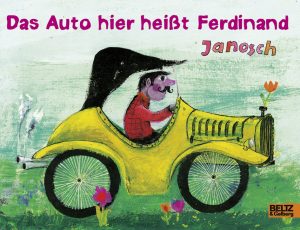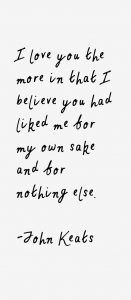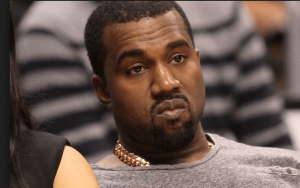I really enjoyed reading this article. As a someone who is raising a daughter I am always concerned about how man and women are portrayed either through the media, and/or the books that we read. I don’t want my daughter growing up focusing on her looks and waiting for someone to save her. On the same note if I was raising a son, I certainly wouldn’t want him to think women were suppose to be helpless, passive, and to clean the home. I thought what Rawia Hayik did in her classroom was great trying to challenge her students minds to see other view points and engage with the text critically. I also like her reflection on how she could have improved on what she had taught as well as realizing that she had inadvertently silenced her male students.
Graphic life writing – biography focus
Just wanted to point out the extra reading “Counter-Storytelling through Graphic Life Writing” by Elizabeth Marshall has some excellent resources. She details 3 picture book/children’s stories: Texts include Duncan Tonatiuh’s (2014) biography of Sylvia Mendez and her family in Separate Is Never Equal: Sylvia Mendez & Her Family’s Fight for Desegregation, Ruby Bridges’s (1999) memoir Through My Eyes, and Christy Jordan-Fenton and Margaret Pokiak-Fenton’s (2013) coauthored auto/biography When I Was Eight. These texts are very intriguing in that they are biographical and concentrate primarily on female experiences of discrimination and racism during childhood. The stories also centre on the idea of institutionalized racism via the school system – this is very relatable for many students and these stories offer true accounts of experiences in addition to offering concrete ties of the past to the present. Marshall offers the term graphic life writing “to refer to the construction of a life story through image and text in forms such as the picturebook or comics.” I thought this could be a term used with students that may help them think of picturebooks through a new and perhaps more complex lens. Again, very inspiring ways to incorporate diverse resources into the classroom to further reflect our whole society of learners and address issues of social justice.
A Great Example of The Golden Age of Comics.
Regarding Kathryn’s brief touching upon comic books the other day. The history of comic books can be divided into several ages with the Golden Age being from the 30’s to the 50’s. The reasons for it being referred to as the Golden Age is that there was a great degree of freedom when it came to story as well as a willingness to use more explicit imagery (Tales from the Crypt by EC Comics being the best example of this). However, with the restrictions imposed by the Comics Code Authority in 1954, said stories became more difficult to make and actually killed off a number of companies (again with EC Comics as an example) until Marvel and DC were the only large comic book companies left. Thus leading to the Silver Age. The reason I gave this little history lesson is that I would like to share an example of a story from the Golden Age and that this story is one I feel can be easily used in a classroom setting due to both it’s short length and deeper themes touched upon.
Here is the link to EC Comic’s “Judgement Day” from 1953.
Presentation Link for Absolutely True Diary of a Part Time Indian

Here is a link to our presentation which has other links for discussions etc.
Thanks for listening and engaging:
Julie, Judy, Charles, and Daniel
Separating the art from the artist
My view on separating the art from the artist is that you cannot. Sure, you can watch a Woody Allen movie without thinking “the director has a history of sexually abusing his daughter,” but buying a ticket for a movie he’s involved in gives him more money, power, and opportunities to assault more women. Every novel read and every movie watched puts another dollar into the pocket of the artist. It gives that person more opportunity to abuse their power and exploit the people around them. I don’t want to do what’s easy—I don’t want to teach something written by someone who abuses their power just because it’s canon—I would much rather read 50 novels written by other people in order to find something that portrays the same themes/messages.
Additionally, I wanted to offer this perspective of a writer, Monique Laban, who is a woman of colour. In the (short) essay, she talks about how much she loved, identified, and found value in Diary before the statements of sexual assault came out. I highly recommend reading the article, but here are some highlights:
- The pain of these allegations, while repugnant and unforgivable no matter how powerful and talented Alexie is, wouldn’t have been so acute had we given more room to other Native writers.
- Instead of viewing this as a loss to myself, I see this as an opportunity to look down the path that Alexie should have provided to other Native writers who create outside the comfort zone of the white establishment — writers whose stories are far riskier, far bolder, far more reflective of that community’s myriad narratives.
I want to introduce these perspectives because I feel that it is important to reflect and have honest conversations with ourselves. As I mentioned in my previous post about passive allyship, I think it’s important that we continually reflect. If we call ourselves feminists and say that we support the #MeToo movement, what are we telling these victims of sexual assault and other forms of power domination when we support these artists just because their art is canon?
Another recent YA novel about LGBT (gay specifically) teen identity
This book is by an acquaintance of mine name Raziel Reid. It is Canadian and an award winner. Written in the first person. It has a few bullying passages and can be pretty blunt but it is very “real”. In fact, mild spoiler, it is a tragedy based on a real life incident. The main character, Jude, deals with his oppression by depreciatingly fantasizing that he is a star in a heavy movie drama.

https://en.wikipedia.org/wiki/When_Everything_Feels_Like_the_Movies
Here is a review from the guardian.
It’s a book that will shock you. Make no mistake about that. The book is incredibly open about the characters and what they get up to ‘behind the scenes’, if you’ll excuse my attempt at humour by using a pun there. This is not a sugarcoated story, it’s raw and it’s gritty, but it’s down to earth and that’s something I think we need more of in YA.
https://www.theguardian.com/childrens-books-site/2016/mar/05/when-everything-feels-like-the-movies-raziel-reid-review
Another book about mixed race identity
I mentioned it today (not on behalf of my group) but I just wanted to clarify that there is a sort- of Canadian YA book, that came out before YA was a genre, that we have taught to adults in Vancouver (can’t remember if it is suitable for older youth but I think it could be) about mixed race identity called Banana Boys by Terry Woo (1999). This novel is kind of the grand-daddy of its own genre of identity exploration YA novels.
I found this book very insightful and important since returning from Japan and befriending many Chinese and Filipino Canadians born and raised here. It also has interesting cartoons and diagrams. Banana Boys has also been turned into a play by Leon Areus.
So if you want to check it out:
https://www.goodreads.com/book/show/891054.Banana_Boys

Here is an excerpt:
http://cormorantbooks.com/downloads/excerpts/BananaBoys_excerpt.pdf
Here is a recent book review and summary:
https://ricepapermagazine.ca/2016/05/book-review-banana-boys-revisited/
Here is a reader response:

Picture books…
As a confirmed Xennial, raised on black-and-white print and (reasonably) at home amongst the colours of pixels, today’s session with Dr. Shoemaker was an eye-opener for me.
Broadly speaking, my bookshelves at home are arranged around non-fiction and fiction. My fiction is arranged around new, ‘proper’ books (ones with mostly words…maybe a few images) and old, ‘kids’’ books (ones with mostly images…maybe a few words). Since I was very, very young, though, I’ve had a set of books by Janosch (the Ferdinand series) that I’ve never been able to think into one or the other. They’re sparsely- and beautifully written. They’re signaturely- and beautifully illustrated. (If a bit dated – descriptions and depictions of Africa as Ferdinand drives through Löwenland are, well, of their time…).
As Dr. Shoemaker said today: their text works because of their imagery and their imagery works because of their text. They’re picture books, and that’s a thing. Might need a new bookshelf. Will definitely use in the classroom.

A propos nothing at all… 🙂
Picture books/graphic novels in highschool
Glad to be introduced to some new resources today and ideas about how to use them, especially the close reading exercise x 7 approach discussed for use with Voices in the Past. Charting out what you notice with each reading allows great depth, an appreciation of time and a record to note process (and progress). It is then a very transferable skill for students to incorporate elements with a new awareness of impact and effect into their own projects. It is often the subtle details that really enhance a creation, but can be overlooked.
I also appreciated the discussion around justifying the use of these materials at the high school level. It’s helpful to have thought about how to phrase the justification of any material, and the linking back to curriculum, in this case, working with visual literacies, and connecting to current platforms (internet which is highly visual) is rock solid!
Keats to Kanye? Do we have to remix?
I forgot to write a post about this when we went over the article but I had a lingering thought after reading Bowmer’s article. It seems like I enjoy all the articles we have read so far and this one is no exception. It’s clear to see that there are many merits bridging school and the everyday but more specifically, utilizing this proposed “literacy of fusion”. My question is, do we have to do this? In high school, I remember learning about different texts without my teachers creating assignments that did not directly require me to pool in modern day resources. I found that I enjoyed the content and the various texts and I could understand them without having connections to popular culture! So once again, do we have to connect modern day examples within the class when teaching works from Blake, Shakespeare or Tennyson? Or can we just teach the text simply “on its own” like how I (and perhaps some of you) learned back in the day?


